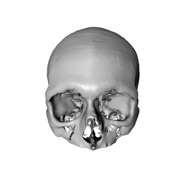Idea
Ive just had one for part of the machine and the sound it will make. I need to draw stuff but it does include rapid prototyping and casting from the printed prototype which is something I really want to learn more about. I will ask in computer land at Cambers on Monday concerning the brains of any technicians well versed in 3D modeling. Else I would like to ask a friend out side school or some external institution. What I think I have in mind is like a rotatable sliced of cloud top with valves in it that can be struck, which are made of a different material and semi-suspended. We could have guitar strings over (or starting from) some part of out central devise and with other rotatable parts they can be struck, we will how ever have to use a hollow space behind the striking length to catch and amplify the sound, of course we should also use electric amps too.
(FROM DIGITAL ENVIRONMENTS BLOG)
On week 5 we made a visit to the 3D printing (rapid prototyping) facility in Central Saint Martins, being part of University of the Arts London fortunately means we can use this. Designing something on a 3D modeling program, be it MAYA or be it google's freeware can be processed in to physical structure.

Wikipedia: Rapid prototyping is the automatic construction of physical objects using additive manufacturing technology. The first techniques for rapid prototyping became available in the late 1980s and were used to produce models and prototype parts. Today, they are used for a much wider range of applications and are even used to manufacture production-quality parts in relatively small numbers. Some sculptors use the technology to produce complex shapes for fine arts exhibitions.
It works by 'printing' layers of plastic that are only just molten one on top of the other. It does so with two types of plastic; one which makes up the actual model and one which is a support, which is added if necessary and can be broken down in some kind of solution (revealing only the model).
This opens whole can of worms. Not only IS everything possible (regarding you master to some degree at least the basics of 3D modeling- which is very difficult I have been told or find someone to help you do it) BUT also this has introduced the possibility to make stop frame animation of a physical work, which is something I am very interested in doing at a later point while at Camberwell.
Im more determined (not just mildly interested) in learning how to use a new software, any software that can make this possible. The machinery used to develop these real models is fascinating. Theoretical and practical all in one operation! Another interesting thing about this process is that one could possibly make casts from the printed models with plaster or clay to be filled with any other material e.g. steel. Or we could use 3D lazer scanning (as shown in the case study during the demonstration) of other objects, people, parts that can in turn be printed. Possibilities are immense.
Any way, Im thinking of a process similar to this:It works by 'printing' layers of plastic that are only just molten one on top of the other. It does so with two types of plastic; one which makes up the actual model and one which is a support, which is added if necessary and can be broken down in some kind of solution (revealing only the model).
This opens whole can of worms. Not only IS everything possible (regarding you master to some degree at least the basics of 3D modeling- which is very difficult I have been told or find someone to help you do it) BUT also this has introduced the possibility to make stop frame animation of a physical work, which is something I am very interested in doing at a later point while at Camberwell.
Im more determined (not just mildly interested) in learning how to use a new software, any software that can make this possible. The machinery used to develop these real models is fascinating. Theoretical and practical all in one operation! Another interesting thing about this process is that one could possibly make casts from the printed models with plaster or clay to be filled with any other material e.g. steel. Or we could use 3D lazer scanning (as shown in the case study during the demonstration) of other objects, people, parts that can in turn be printed. Possibilities are immense.
ALSO! THESE ARE GOOD TO WATCH:
0 comments:
Post a Comment